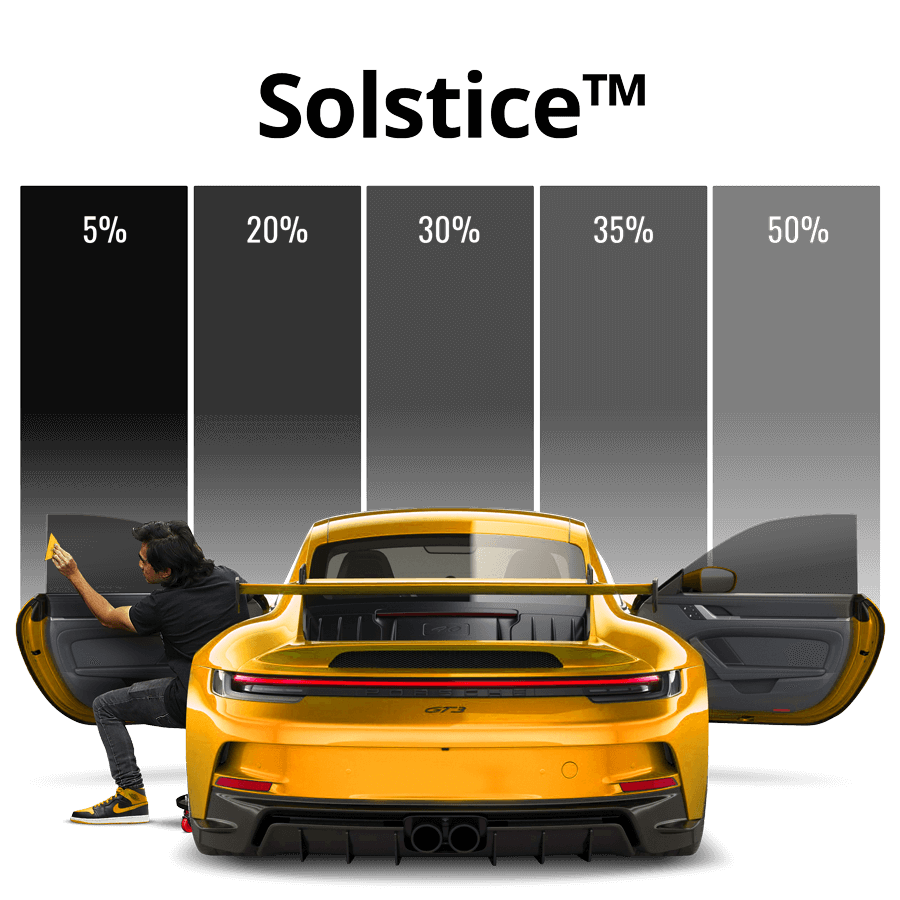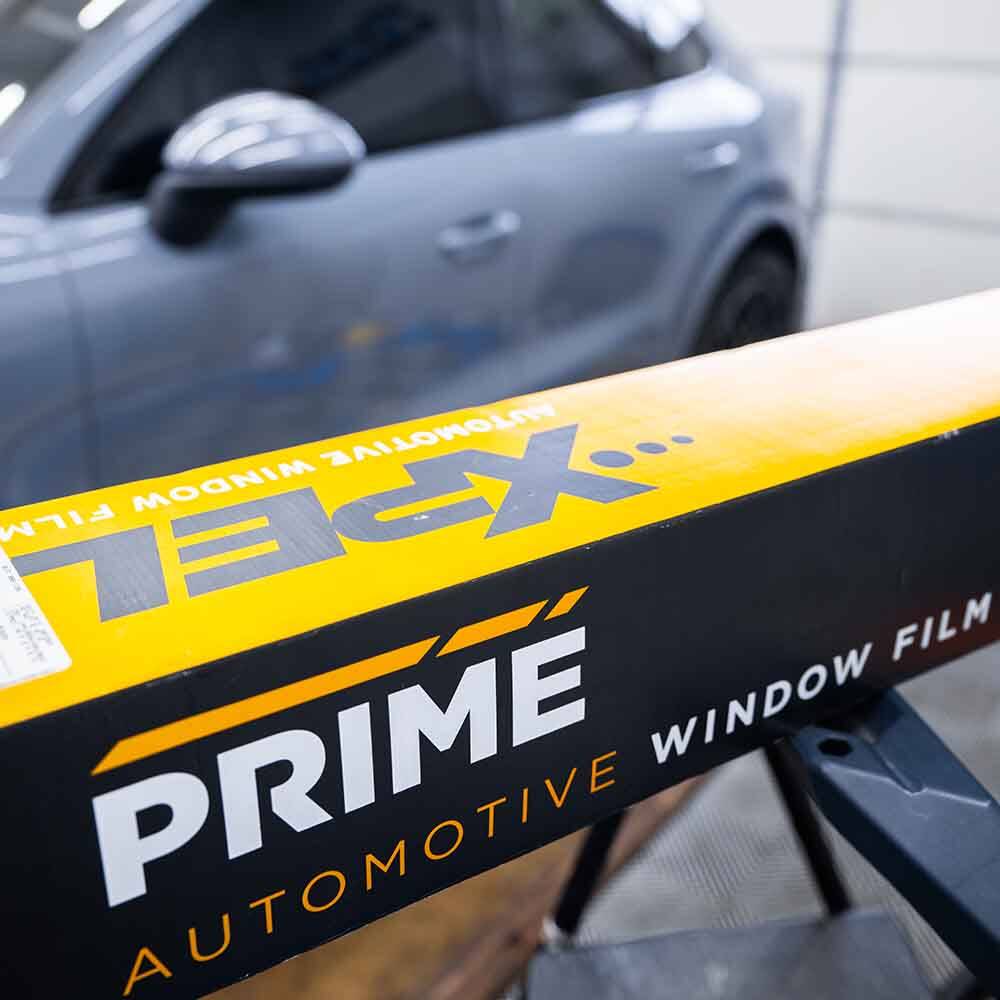A Comprehensive Guide to Recognizing Car Window Tint and Its Benefits
Automobile home window tinting offers even more than just a visual function for cars. It supplies different types, each with distinct attributes and advantages. Recognizing these choices, together with legal regulations and upkeep tips, is vital for any kind of automobile owner. The benefits may greatly improve driving convenience and vehicle longevity. As one explores the nuances of home window tinting, the question occurs: what type of tint is finest matched for private requirements?
Comprehending Auto Home Window Tint: What It Is and How It Works
Auto window color serves as a protective obstacle that improves car aesthetics while supplying useful advantages. This slim film is applied to the indoor surface of automobile home windows, minimizing glow and obstructing harmful ultraviolet (UV) rays from the sun. By filtering sunlight, car window tint aids to manage the indoor temperature of the automobile, leading to enhanced convenience for guests and reduced reliance on air conditioning.Additionally, it safeguards the automobile's interior from fading, preserving both upholstery and dashboard materials. The tint can likewise improve personal privacy, making it more difficult for outsiders to see inside the car. Certain kinds of home window color can raise security; in the occasion of a mishap, the movie helps hold shattered glass with each other, lowering the danger of injury from flying shards. Overall, vehicle home window tint serves both visual and practical objectives, making it a prominent selection amongst lorry owners.
Kinds of Window Color: An Overview of Options
When thinking about home window color options, several types are offered, each with distinctive characteristics. Colored, metalized, and ceramic home window colors provide differing levels of warm rejection, UV protection, and aesthetic appeal. Understanding these distinctions can help automobile proprietors make notified options based on their choices and needs.
Dyed Window Color
Dyed window color stands for a preferred choice amongst automobile owners looking for a inexpensive and effective way to enhance their vehicle's aesthetic appeals and personal privacy. This type of tint is developed by placing a layer of color in between a protective layer and a sticky layer, leading to a dark look that reduces glow and boosts visual comfort. While dyed home window color successfully blocks dangerous UV rays, it might not provide the same level of warmth rejection as various other color types. Additionally, its color can fade in time, possibly reducing its performance. In spite of these drawbacks, colored home window tint continues to be preferred for its cost-effectiveness and capability to supply a sleek, trendy want to various vehicle designs.
Metalized Window Tint
Metalized window tint supplies a balance of style and capability, making it a preferred choice among auto proprietors. This kind of tint incorporates metallic fragments within the film, enhancing both aesthetic appeal and heat rejection. The reflective high quality of metalized color assists to minimize glare and enhance personal privacy, while likewise supplying UV protection, which safeguards the vehicle's inside. Additionally, metalized home window color can enhance window strength, possibly preventing shattering during crashes. Nonetheless, it is very important to keep in mind that the metallic elements can hinder electronic signals, such as GPS and cellular phone function. In general, metalized window tint provides an efficient solution for those looking for a combination of resilience, appearance, and sun protection for their vehicles.
Ceramic Window Tint
Ceramic home window color stands for a sophisticated choice in the spectrum of auto window films, supplying unique benefits over conventional colors. Unlike dyed or metalized movies, ceramic tints use innovative ceramic fragments, which successfully reject warm and UV rays without jeopardizing presence. This technology ensures that vehicles remain cooler, reducing reliance on air conditioning and boosting fuel efficiency. Furthermore, ceramic window colors are much less likely to hinder electronic devices, such as GPS or mobile signals, making them a sensible selection for contemporary cars. Their resilience and scratch resistance add to a much longer lifespan compared to various other kinds of colors. In general, ceramic window tint provides superior performance, convenience, and protection, making it a favored alternative for critical lorry proprietors.
Advantages of Vehicle Home Window Color: Beyond Appearances
While many individuals associate vehicle home window tint with boosted design, its benefits extend far past plain aesthetics. One significant advantage is warmth reduction; window tint can obstruct up to 99% of dangerous UV rays, keeping the interior colder and protecting upholstery from fading. This not only improves convenience throughout heat yet likewise lowers dependence on air conditioning, leading to enhanced fuel efficiency.In addition, auto window color provides an included layer of privacy and protection. Tinted windows make it difficult for outsiders to see inside the car, which can hinder burglary and shield belongings. In addition, many colors enhance the glass, decreasing the probability of ruining in the event of an accident, thereby enhancing safety.In addition to these useful advantages, vehicle home window color can also add to glow decrease, enhancing visibility for travelers and motorists alike. This diverse strategy to comfort and security makes home window color a useful investment for lorry proprietors.
Legal Factors To Consider: Tinting Laws by State
Prior to committing to car window tint, car proprietors should browse an intricate landscape of tinting laws that differ by state. Each state has certain legislations governing the acceptable degrees of tint darkness and reflectivity for various home windows, including windshields, front side windows, and back windows. These guidelines frequently include noticeable light transmission (VLT) percentages, which determine just how much light can pass via the tinted glass.Some states allow darker colors on rear windows while restricting front side and windshield tints for safety reasons. Furthermore, particular states might need a certificate from the producer to validate conformity with tinting regulations. Breaking these policies can cause penalties, obligatory removal of the color, or both. Consequently, it is important for vehicle proprietors to research their state's regulations thoroughly to assure legal conformity prior to setting up window color. This diligence can save time and cash in the future.
Selecting the Right Color: Variables to Take into consideration
When choosing the proper window color for a car, several critical aspects enter into play. Color darkness levels, UV defense scores, and compliance with Extra resources legal regulations are necessary considerations to assure both visual appeals and performance. Examining these aspects will aid individuals make an educated decision that meets their demands and sticks to neighborhood legislations.
Color Darkness Degrees
Choosing the proper tint darkness level is essential for accomplishing the desired equilibrium in between appearances and capability in vehicle window tinting. Different states have differing lawful regulations pertaining to color darkness, which can impact the selection. Generally, tints are determined in percentages, with reduced percentages suggesting darker shades. Darker tints provide enhanced privacy and a smooth appearance however can decrease exposure, particularly during the night. Alternatively, lighter colors keep an even more open feeling, ensuring ample exposure while still offering some warm and glow reduction. When making a decision, individuals need to consider their driving routines, neighborhood legislations, and personal choices. Ultimately, the appropriate tint darkness degree enhances the automobile's appearance while guaranteeing safety and security and conformity with legal requirements.
UV Security Rating
Tint darkness levels play a significant duty in the general efficiency of car window tinting, yet another essential variable to examine is the UV defense rating of the chosen color. This ranking indicates the portion of hazardous ultraviolet rays that the tint can block. Top notch tints commonly supply 99% or even more UV security, safeguarding travelers and the vehicle's inside from sun damage. Davinci of Michigan. Extended direct exposure to UV rays can lead to skin problems and fading of upholstery, making a high UV defense ranking crucial for health and wellness and durability. When picking window color, customers must prioritize this ranking alongside darkness levels to guarantee maximum convenience and safety and security while driving. Comprehending these aspects help in making an informed choice when buying auto window tinting
Lawful Regulations Conformity
Understanding local lawful guidelines is essential for anybody taking into consideration auto window tinting. Each state or region has certain legislations governing the permitted degrees of color darkness and reflectivity for various home windows. These policies usually specify the visible light transmission percent, determining just how much light can travel through the colored glass. Non-compliance can cause fines, necessary elimination of the tint, or problems during automobile examinations. Furthermore, some areas might have constraints on the use of certain tinting products, requiring customers to select items that satisfy safety standards. It is essential for lorry owners to investigate their local legislations thoroughly before picking window tint to assure compliance and stay clear of potential legal difficulties.

Setup Refine: do it yourself vs. Professional Services
How does one determine between a DIY setup and employing expert services for automobile home window tinting? The selection usually depends upon budget, experience, and desired results. A do it yourself approach can be cost-effective, allowing individuals to save money on labor costs. It requires a particular degree of ability and knowledge concerning the tinting procedure. Those that are thorough and individual might discover success with DIY kits readily available in the market.Conversely, specialist services supply proficiency and top quality materials, guaranteeing a remarkable finish. Professionals commonly ensure their job, offering peace of mind versus potential issues such as bubbling or peeling. Furthermore, they know with local laws regarding tinting, which can be intricate for the typical automobile owner.Ultimately, the decision mirrors a balance in between price, personal capacity, and the expected quality of the tinting task. Each option has its advantages, and the most effective option depends on specific scenarios and preferences.
Upkeep Tips: Keeping Your Color in Top Problem

Often Asked Questions
How Lengthy Does Home Window Tint Usually Last on a Car?
Window color commonly lasts between five to 10 years, depending upon variables such as top quality, application, and ecological conditions. Regular maintenance and proper treatment can prolong its lifespan, making certain ideal performance and appearance in time.
Can Home Window Tinting Damage My Vehicle's Original Glass?
Window tinting, when used properly, does not harm an auto's original glass. However, incorrect installation or low-grade materials may lead to concerns like peeling or gurgling, potentially impacting the glass's integrity gradually.
Is Home Window Tinting Safe for All Types of Autos?
Window tinting is usually safe for a lot of vehicles, supplied the movie follows local guidelines and is properly applied. Some specific automobiles might call for specific considerations, making it necessary to consult professionals before setup.
Will Window Tinting Space My Auto Service Warranty?
The concern of whether home window tinting voids an automobile service warranty frequently depends upon the maker's plans. Usually, if the tint does not damage the vehicle, service warranties typically remain undamaged. Getting in touch with the dealership is a good idea.
Can I Eliminate Window Tint Myself if Needed?
Eliminating window color oneself is possible, yet it calls for cautious interest to prevent damaging the glass. People need to make use of suitable tools and strategies to assure a successful removal without leaving glue deposit or scratches behind. While dyed window color efficiently blocks damaging UV rays, it may not provide the same degree of warmth being rejected as other tint kinds. Ceramic home window color stands for a sophisticated option in the spectrum of auto home window films, use this link offering distinct benefits over standard tints. Before devoting to car window color, vehicle owners must browse a complex landscape of tinting guidelines that differ by state. These click to find out more regulations often consist of noticeable light transmission (VLT) portions, which dictate how much light can pass with the colored glass.Some states permit darker tints on back home windows while restricting front side and windscreen tints for security reasons. Tint darkness levels play a significant function in the total effectiveness of vehicle window tinting, however one more crucial factor to assess is the UV defense rating of the selected color.